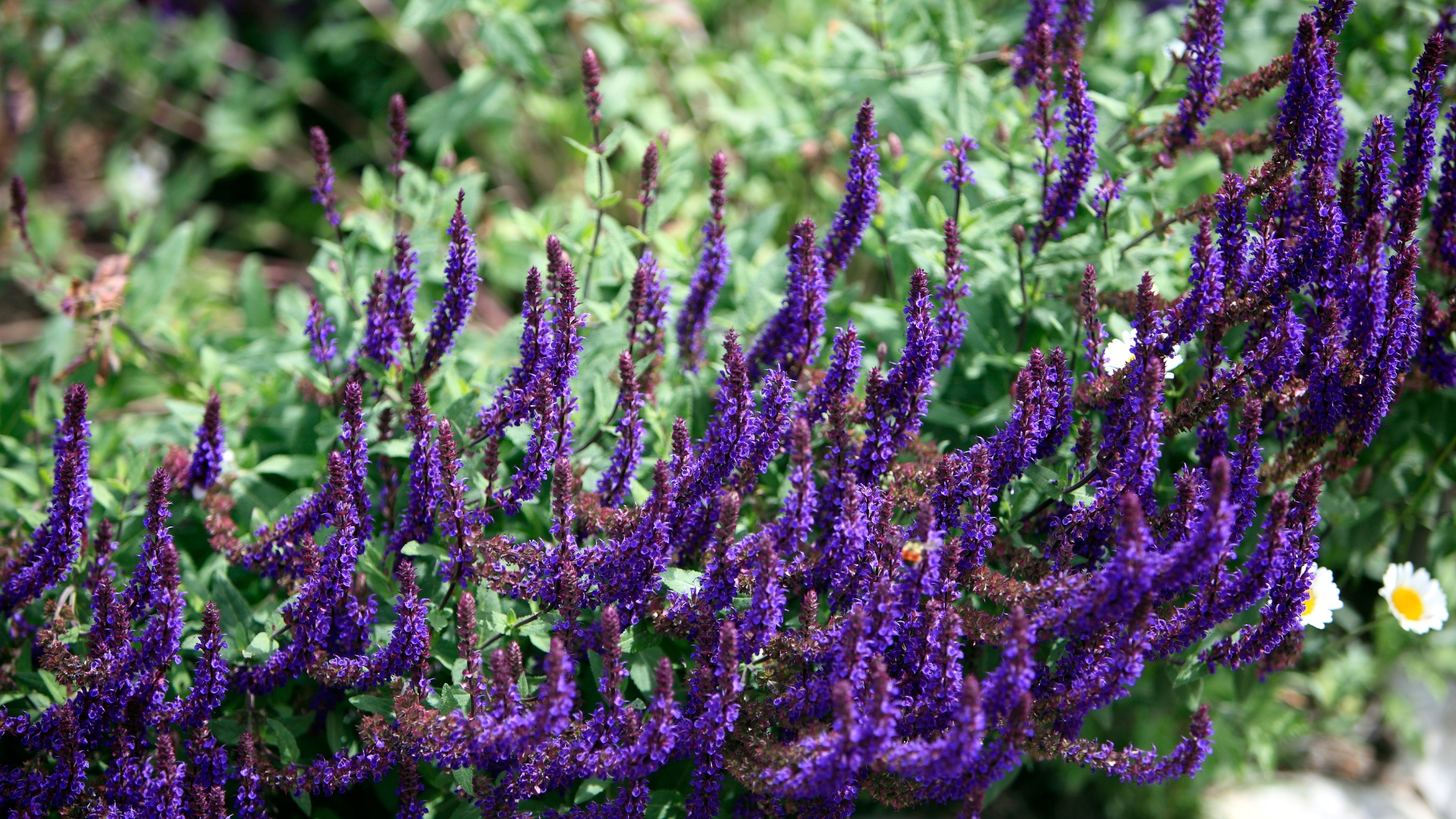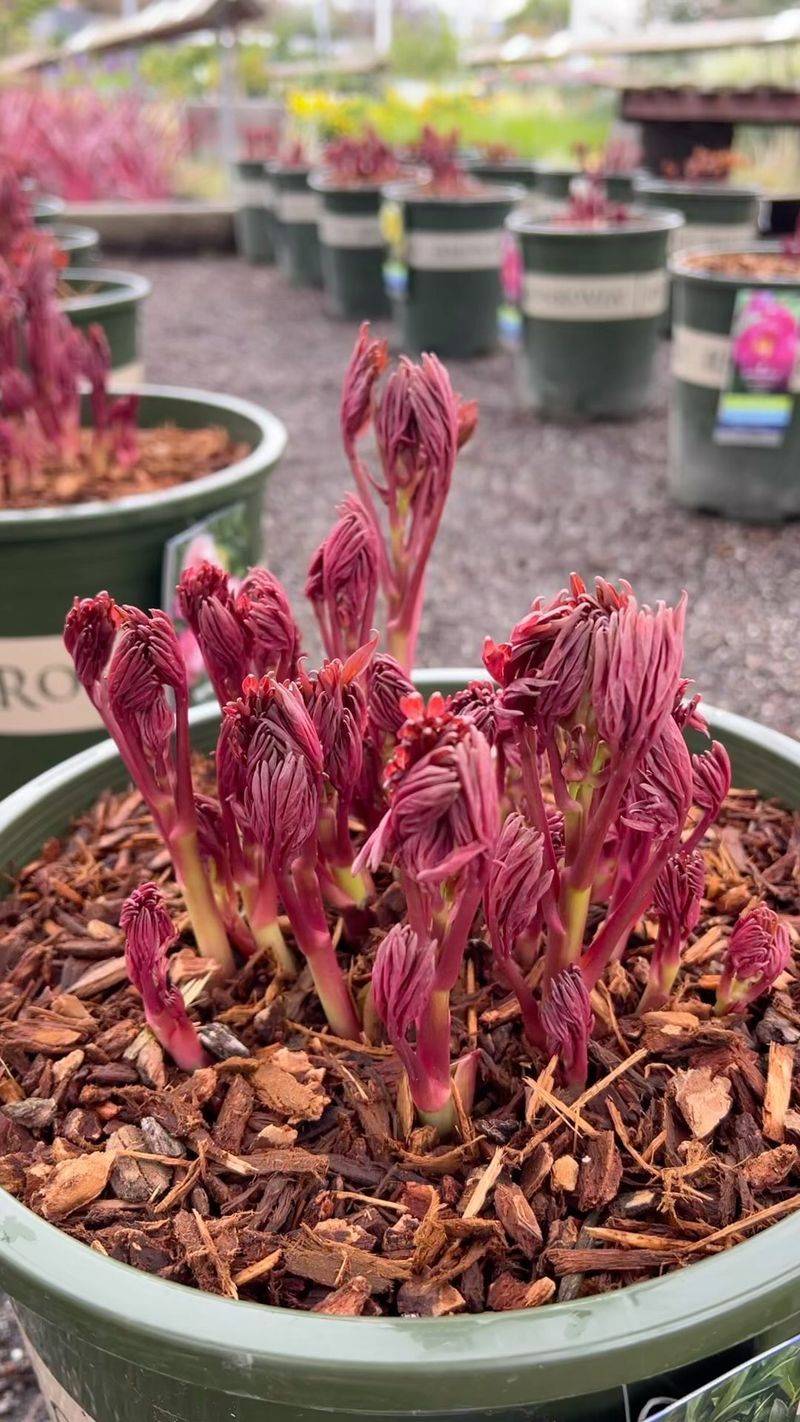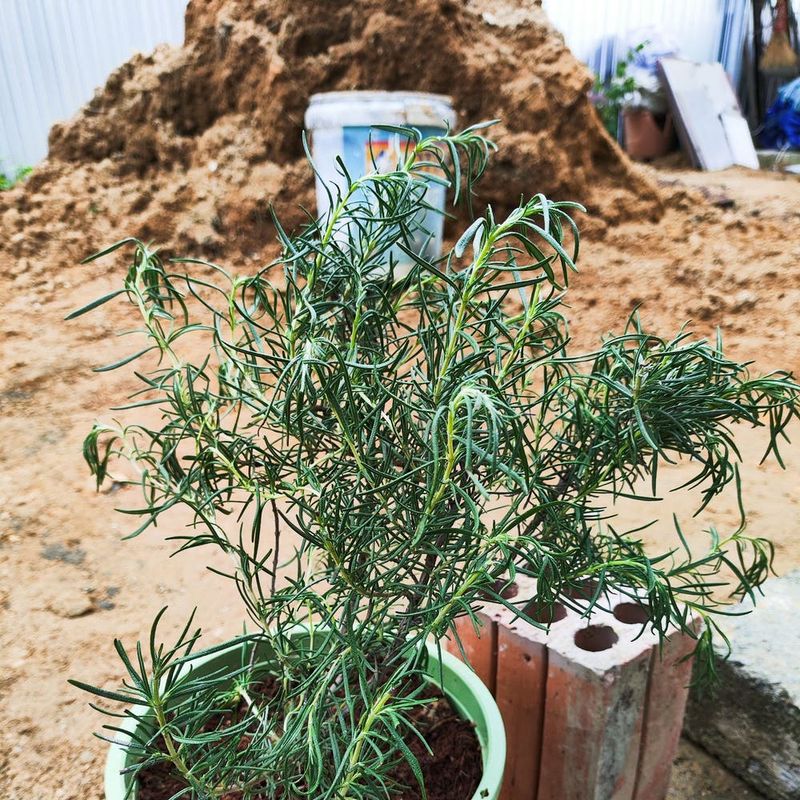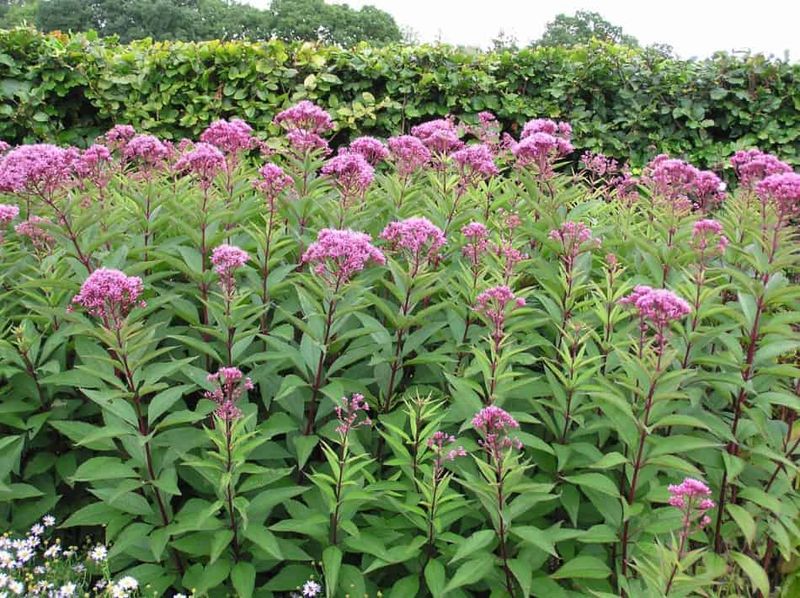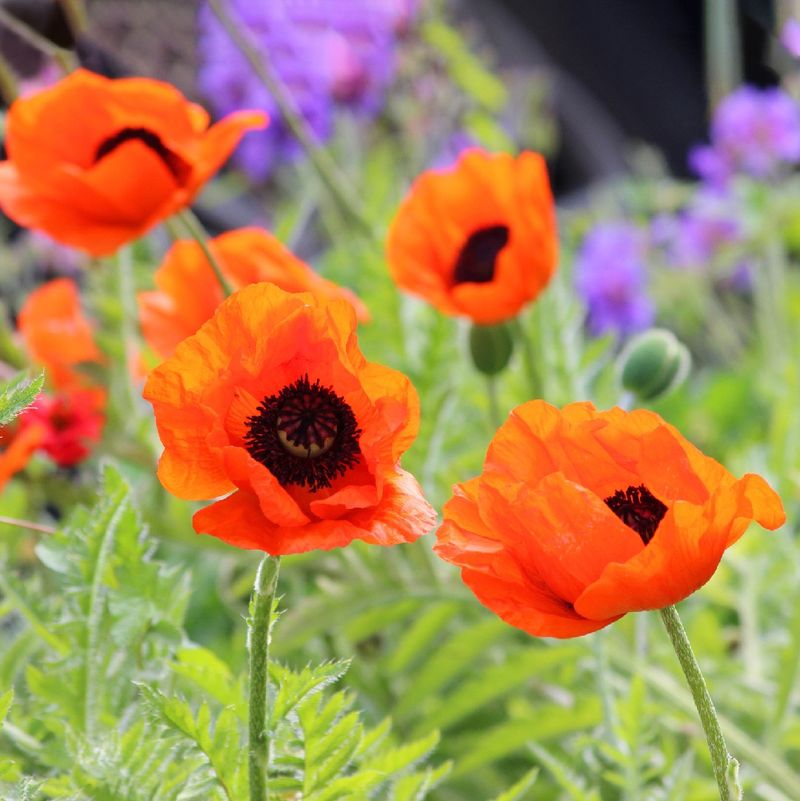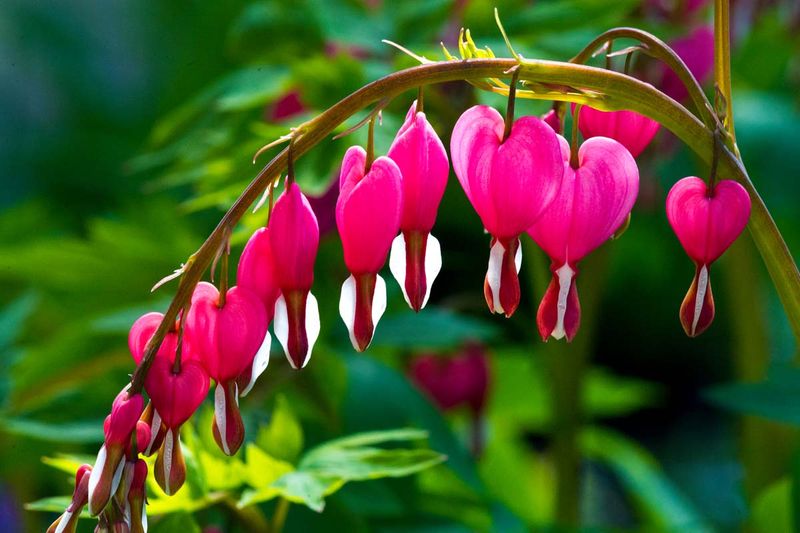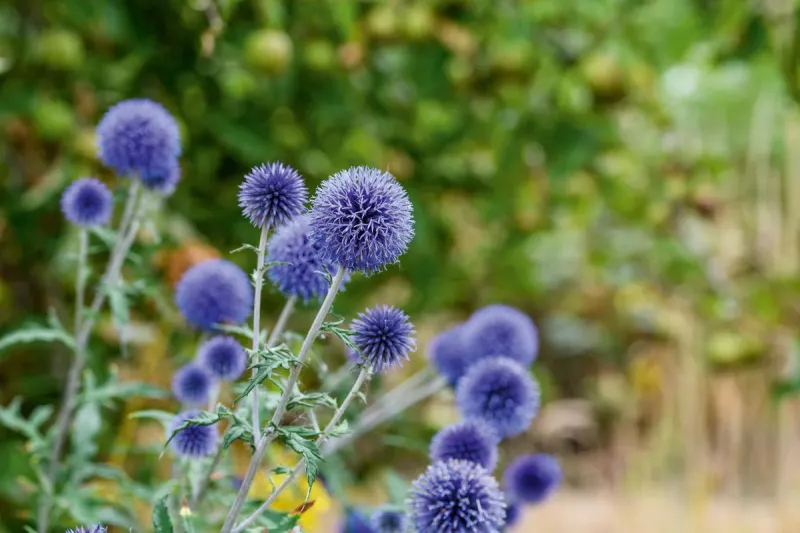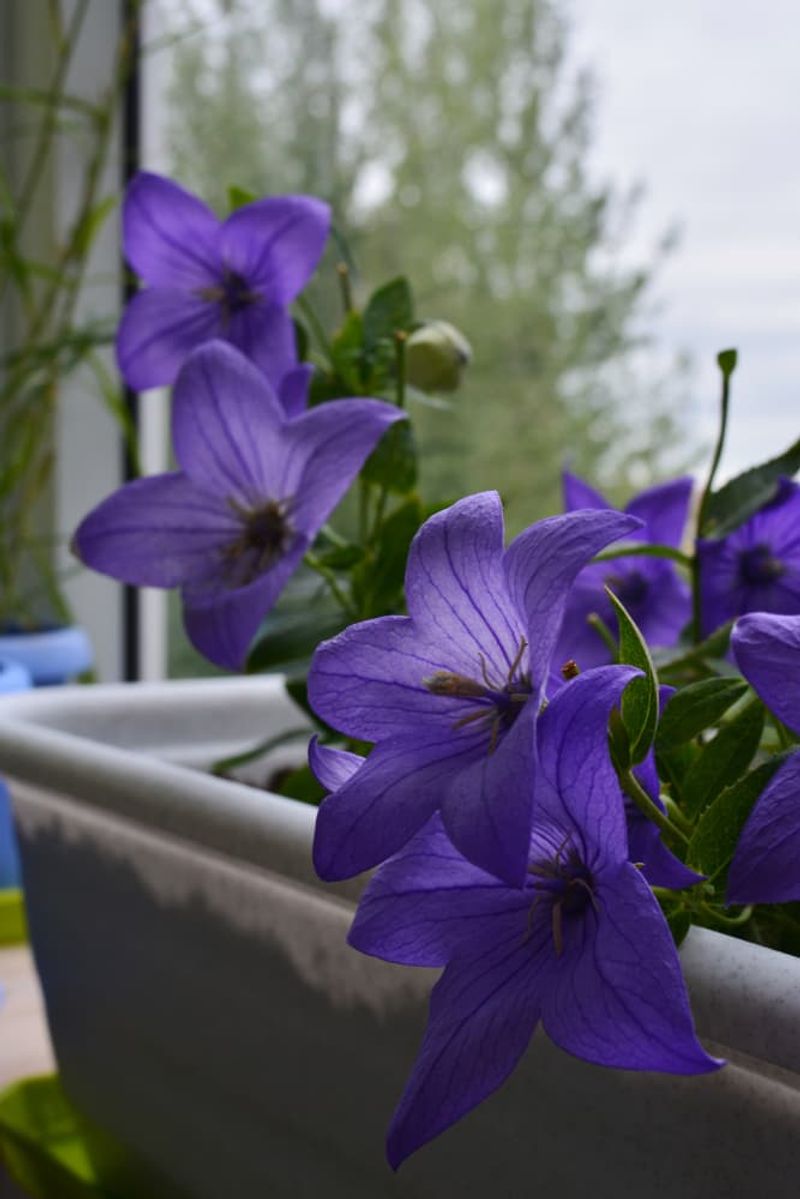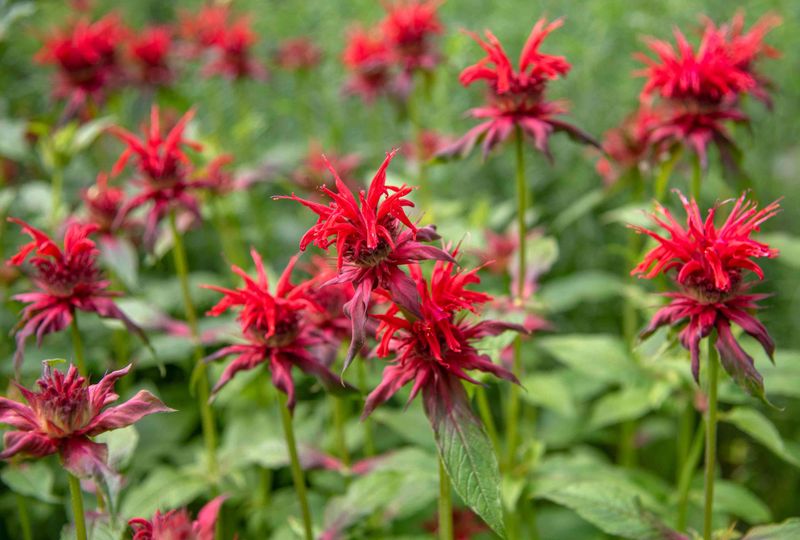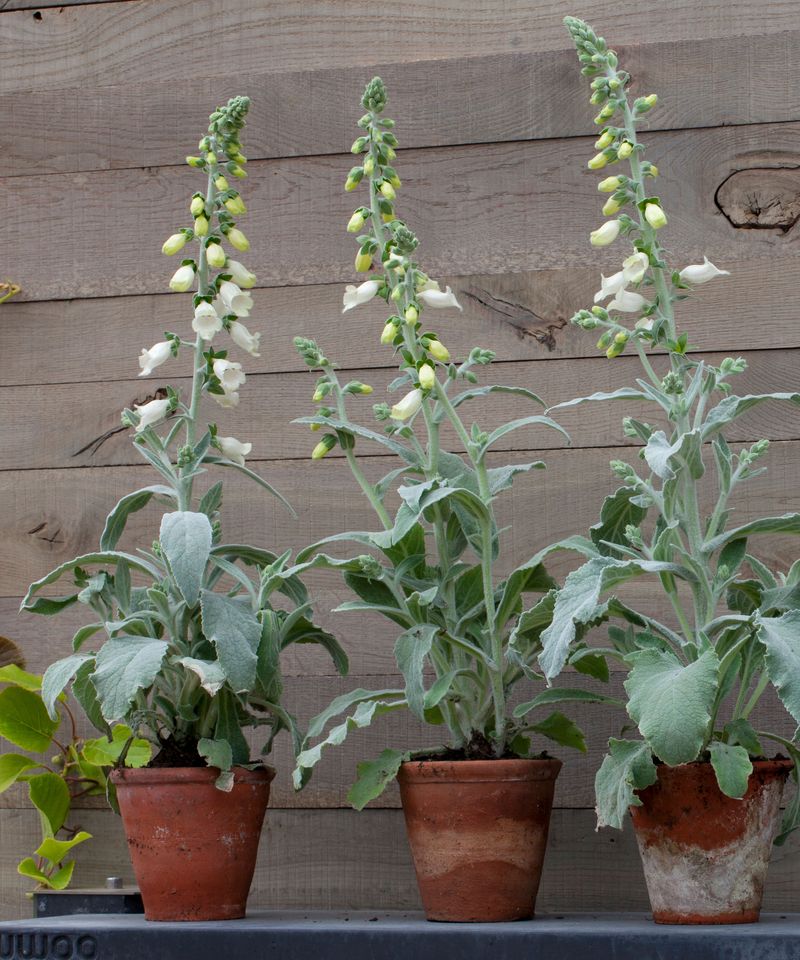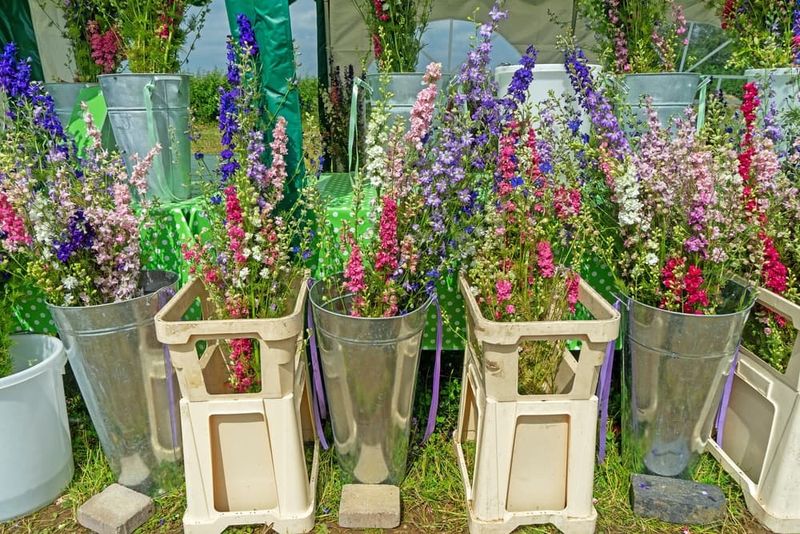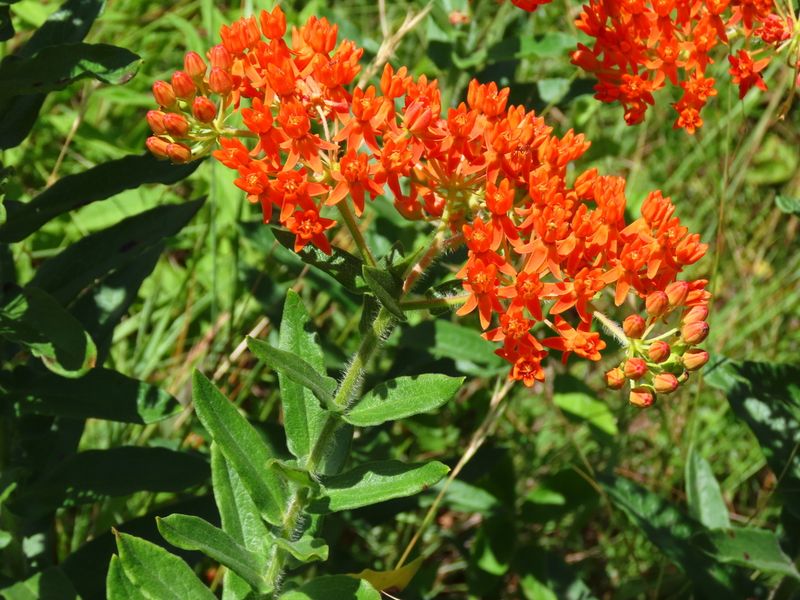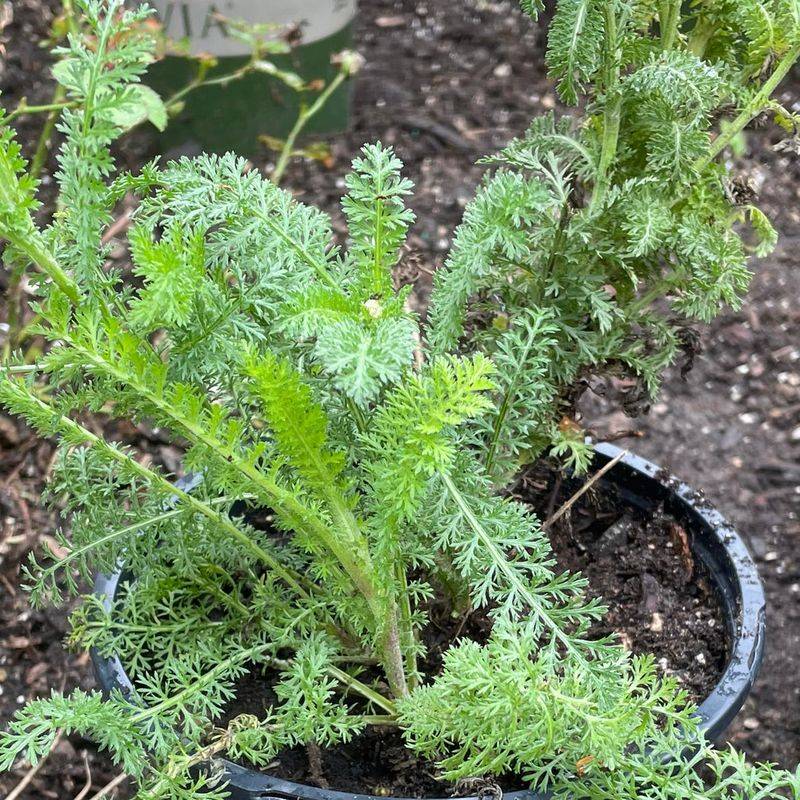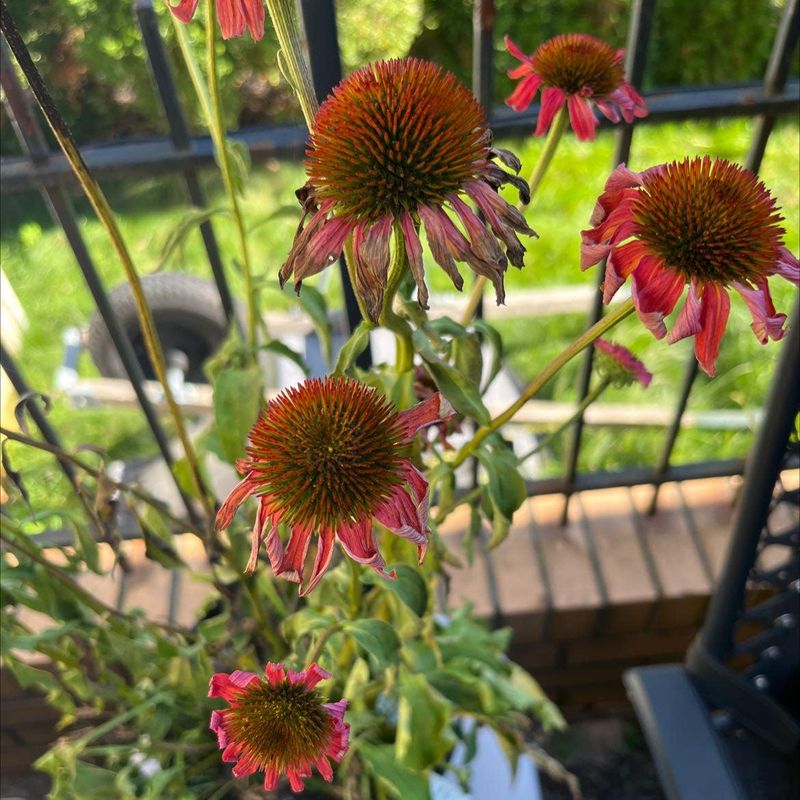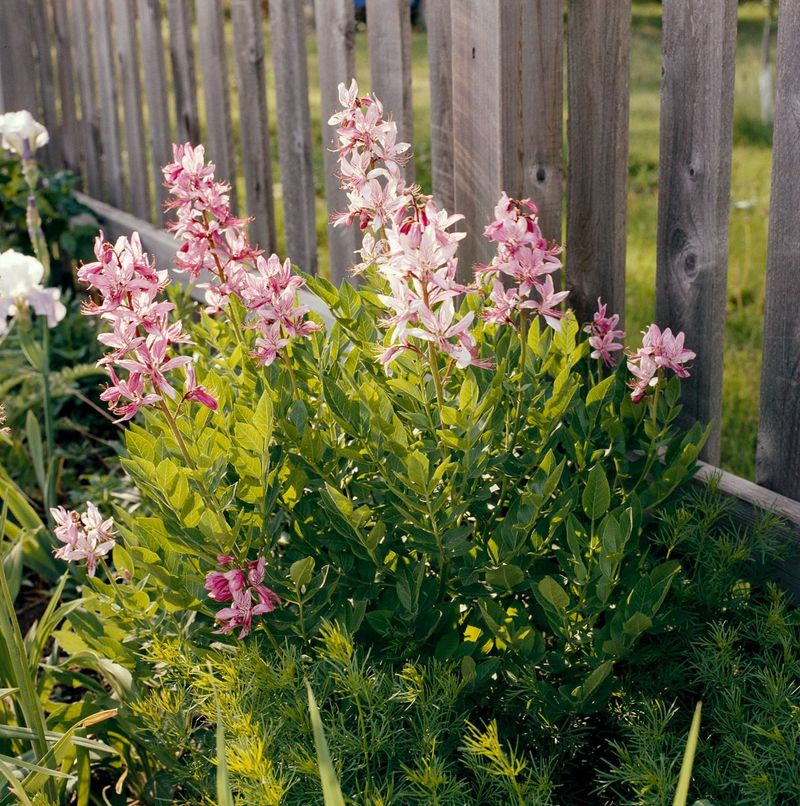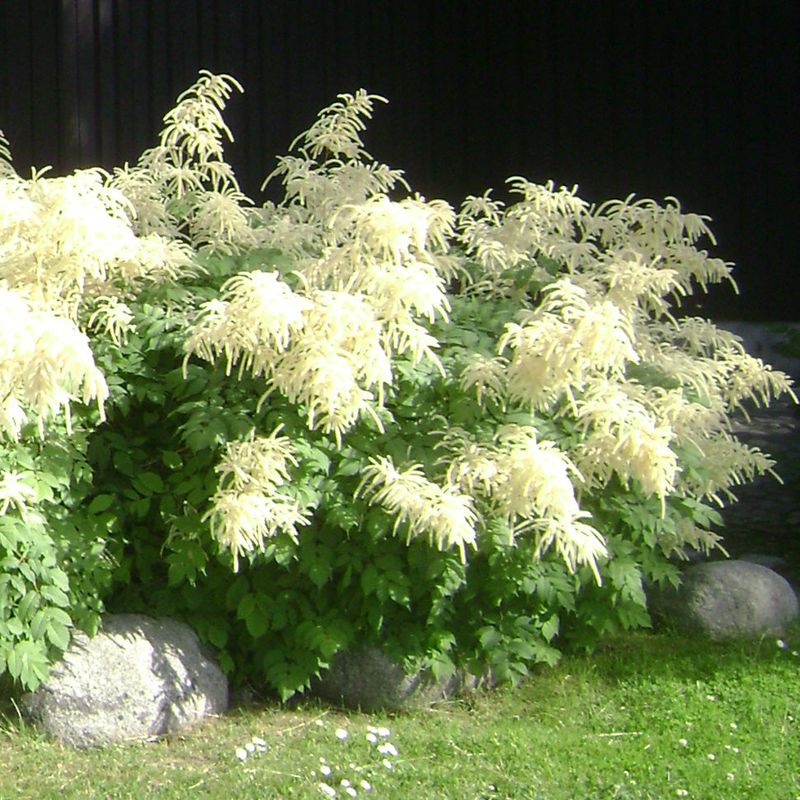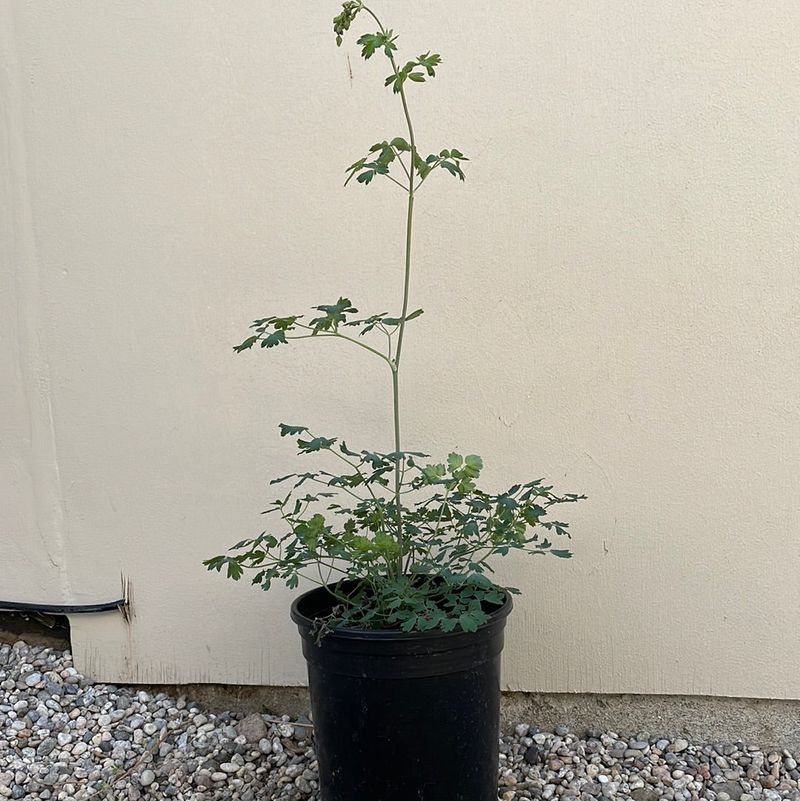Growing perennial flowers in containers seems like a perfect way to enjoy their beauty year after year, especially in small spaces. Unfortunately, not all perennials thrive when confined to pots. Some flowers develop extensive root systems that quickly become cramped, while others have specific soil or drainage requirements that are difficult to maintain in containers. Understanding which perennials to avoid potting will save you time, money, and gardening heartbreak.
1. Peonies Need Room to Breathe
Peonies develop massive root systems that can extend several feet deep and wide. When confined to pots, these beautiful bloomers become severely stressed and produce fewer flowers each year.
The restricted root space prevents them from accessing enough nutrients to support their showy blooms. Peonies also dislike being disturbed once established, making repotting a risky endeavor.
For best results, plant these long-lived beauties directly in garden beds where they can stretch out and live for decades without disturbance.
2. Russian Sage Rebels Against Confinement
Russian sage grows into a sprawling, woody subshrub reaching 3-4 feet tall and equally wide. The extensive root system quickly becomes pot-bound, causing stunted growth and fewer of those lovely purple flower spikes.
Hot container conditions stress these plants, despite their drought tolerance in ground. The shallow depth of most pots simply can’t accommodate their deep-seeking roots.
Gardeners who attempt to grow Russian sage in containers often discover leggy, weakened plants that topple over from their own weight without proper root anchoring.
3. Baptisia’s Deep Taproot System
False indigo (Baptisia) develops an impressive taproot that plunges deep into the soil, sometimes reaching depths of 12 feet in mature plants! This adaptation helps the plant survive drought conditions but makes container growing nearly impossible.
Even large pots restrict this natural growth pattern, resulting in stunted plants that never reach their full, shrub-like potential. The restricted root space means fewer of those beautiful lupine-like flower spikes.
Young plants might seem fine initially, but as they mature, they quickly outgrow even the most generous containers.
4. Joe-Pye Weed Grows Too Mighty
Joe-Pye weed towers at an impressive 5-7 feet tall in garden settings, making it fundamentally unsuited for container life. The massive height creates top-heavy plants that easily topple over when grown in pots.
The root system expands rapidly, quickly becoming cramped and stressed in container environments. Even jumbo pots can’t provide enough soil volume to sustain healthy growth long-term.
Water demands skyrocket in containers, requiring constant attention during summer months. These native beauties simply need more space than pots can provide to support their majestic stature.
5. Oriental Poppies Resent Disturbance
Oriental poppies form long taproots that resent any disturbance or restriction. When grown in containers, these dramatic bloomers often fail to return after their dormant period because their roots couldn’t establish properly.
Summer dormancy creates another container challenge. The dying foliage looks terrible in prominent pot displays, leaving an unattractive gap in your container garden.
The freeze-thaw cycles that containers experience in winter are particularly damaging to poppy roots, often killing plants that would easily survive similar temperatures in the ground.
6. Bleeding Hearts Fade Fast in Pots
Bleeding hearts naturally grow in woodland settings with consistently moist, rich soil. Container life subjects them to temperature fluctuations and moisture stress that causes premature dormancy and weak growth.
The delicate root systems suffer in the confined space of pots, especially during hot weather. Even with diligent watering, potted bleeding hearts typically go dormant much earlier than their in-ground counterparts.
Winter protection becomes particularly challenging, as the exposed roots in containers are vulnerable to freezing temperatures that would be buffered in garden soil.
7. Globe Thistle’s Root Rebellion
Globe thistle develops an extensive network of spreading roots that quickly becomes cramped in containers. The restricted root growth leads to smaller plants with fewer of those distinctive blue globe flowers that make this perennial so appealing.
The drought-tolerant nature of globe thistle actually works against it in pots. Plants adapted to dry conditions often develop deep or spreading root systems that containers simply can’t accommodate.
Mature plants need substantial soil volume to support their impressive height and flower production, making even large containers inadequate for long-term cultivation.
8. Balloon Flower’s Secret Spreading Habit
Balloon flowers might seem like good container candidates initially, but their rhizomatous root systems eventually become severely cramped. The restricted growing space leads to fewer of those charming balloon-shaped buds and star-shaped flowers.
Mature plants develop woody root crowns that need ample space to support healthy growth. When confined to pots, these root crowns often rot during wet periods or suffer during drought.
Container-grown balloon flowers typically decline after 2-3 years, while garden-planted specimens continue thriving for decades. The constant freeze-thaw cycles in pots particularly damage their shallow root systems.
9. Bee Balm’s Aggressive Spreading Tendencies
Bee balm spreads vigorously through underground rhizomes, quickly becoming rootbound and stressed in containers. The restricted growth leads to reduced flowering and increased susceptibility to powdery mildew, a common bee balm problem.
Container-grown plants require frequent division – usually annually – making maintenance much more challenging than garden-grown specimens. The shallow pot depth can’t accommodate their natural spreading habit.
Water needs skyrocket in containers, and bee balm already demands consistent moisture. This creates a nearly impossible watering schedule during summer heat, leading to stressed plants with fewer pollinator-friendly blooms.
10. Foxgloves Fail to Fulfill Their Potential
Though technically biennials or short-lived perennials, foxgloves deserve mention because they simply cannot achieve their dramatic height potential in containers. The majestic 3-5 foot flower spikes become stunted and often flop over when grown in pots.
Foxgloves naturally self-seed to create ongoing displays in gardens. This important reproductive strategy is lost in containers, breaking their natural lifecycle.
The taproot development is severely restricted in pots, leading to weak plants with fewer flowers. Container-grown specimens typically produce only a fraction of the blooms seen on garden-planted foxgloves.
11. Delphinium’s Disappointing Container Performance
Delphiniums create those stunning spires of blue, purple, or white flowers by developing deep root systems that anchor their impressive height. Container life stunts this growth, resulting in shorter plants that require staking and produce fewer blooms.
The shallow depth of most pots can’t provide the cool root environment these plants crave. Hot container soil leads to stress, particularly during summer heat waves.
Winter survival becomes a major challenge in pots. Delphiniums need good drainage yet consistent moisture – a balance nearly impossible to maintain in containers through seasonal changes.
12. Butterfly Weed’s Deep Root Resentment
Butterfly weed develops an impressive taproot that can extend several feet deep, making it fundamentally unsuited for container growing. This native milkweed relative uses its deep root system to survive drought conditions in the wild.
Container cultivation prevents proper root development, resulting in shorter plants with fewer of the bright orange flowers that attract butterflies. The restricted roots also mean plants store less energy for winter survival.
Transplanting from containers to garden beds often fails because the sensitive taproot gets damaged. These monarch butterfly magnets simply need more space than pots can provide.
13. Yarrow Yearns for Open Ground
Yarrow’s spreading habit and drought tolerance come from its extensive root system – a feature that makes it poorly suited to container life. When confined to pots, yarrow becomes severely rootbound within a single season.
The cramped conditions lead to floppy stems that require unsightly staking. The flat-topped flower clusters appear smaller and less impressive than those on garden-grown plants.
Drought tolerance becomes a liability in pots, as yarrow’s roots constantly search for more space and water. This natural adaptation works against it in containers, creating stressed plants that never achieve their full potential.
14. Coneflower’s Container Complaints
Coneflowers develop deep root systems to survive prairie droughts – an adaptation that makes them struggle in the limited depth of containers. Pot-grown specimens typically produce fewer of their cheerful daisy-like blooms with distinctive cone centers.
The restricted root space means plants can’t access enough nutrients to support robust flowering. Container-grown coneflowers often appear stunted compared to their garden counterparts.
Winter survival becomes particularly challenging in pots, as the exposed roots experience more extreme temperature fluctuations than in-ground plants. Even “dwarf” varieties ultimately prefer garden growing conditions.
15. Gas Plant’s Toxic Tendencies
Gas plant (Dictamnus) isn’t just challenging in containers – it’s potentially dangerous! This unusual perennial gets its name from the flammable oils its flowers release on hot days, which can actually ignite with a match.
Container growing concentrates these oils near patios and seating areas where people might contact the irritating foliage. The deep taproot system becomes severely restricted in pots, leading to poor growth and fewer of its pretty pink or white flowers.
Repotting is particularly hazardous as all plant parts can cause severe skin reactions. This fascinating but difficult perennial belongs in garden beds, not containers.
16. Goat’s Beard Grows Grumpy in Pots
Goat’s beard naturally grows in moist woodland settings, reaching 4-6 feet tall with feathery plumes of white flowers. Container life severely restricts this impressive size potential, resulting in stunted, unsatisfying specimens.
The moisture-loving nature of this plant makes container growing particularly challenging. Pots dry out quickly in summer heat, creating constant drought stress for a plant that naturally grows in consistently damp conditions.
Winter protection becomes problematic as well, since the exposed roots in containers are vulnerable to freezing. This shade-loving native simply needs more space and consistent moisture than pots can provide.
17. Meadow Rue Resists Restriction
Meadow rue creates airy, cloud-like flower displays on stems reaching 4-6 feet tall in garden settings. Container growing prevents this impressive height, resulting in shorter plants with fewer of their delicate, lacy blooms.
The extensive root system quickly becomes cramped in pots, creating water stress during summer months. Even large containers can’t provide enough soil volume to sustain healthy growth long-term.
Winter survival rates plummet in containers, as meadow rue roots are particularly sensitive to freeze-thaw cycles. These woodland natives need the consistent temperature and moisture that only garden soil can provide.

